German Architecture – Explore Famous German Buildings
German architecture has, along with much of Continental European architecture, been integral to the development of architecture in the West for millennia. In this article, we will examine German architecture in general before looking at the historical development of this important nation’s contribution to architecture. Finally, we will discuss different iterations of styles from a German perspective, a few famous German architects, and lastly, have a look at a few famous German buildings. Keep reading to learn more about German architecture!
A Look at German Architecture
German architecture comes in many shapes and forms, and it is worth examining the lengthy history and variations in the European architectural styles that developed in Germany over the centuries. The country has a long and illustrious history in terms of architectural capability and innovation, and so let’s have a look at some of that architectural might.
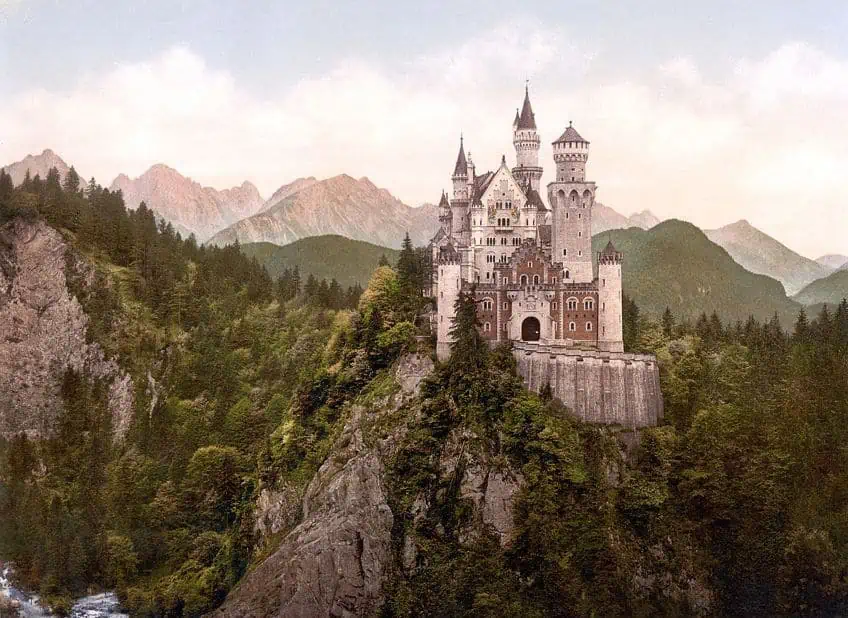
What Is German Architecture?
German architecture is a term that does not necessarily mean much on its own. Germany has been a part of the European architectural tradition since the earliest days of Western civilization. It has been an integral part of the architectural tradition and many advances and developments occurred throughout its history. Perhaps the most recent of which is that Germany was at the forefront of Modern architecture, but we’ll get to that in time.
Let’s have a look at the historical development of German architecture and what has made it such an important part of world architectural history.
The Historical Context of German Architecture
Germany, as a part of Europe, has seen many of the same architectural trends over the centuries, but we still need to examine those historical trends before we can discuss the German contribution to each of them. So, let’s have a look at the history of German architecture from the ancient period to the present.
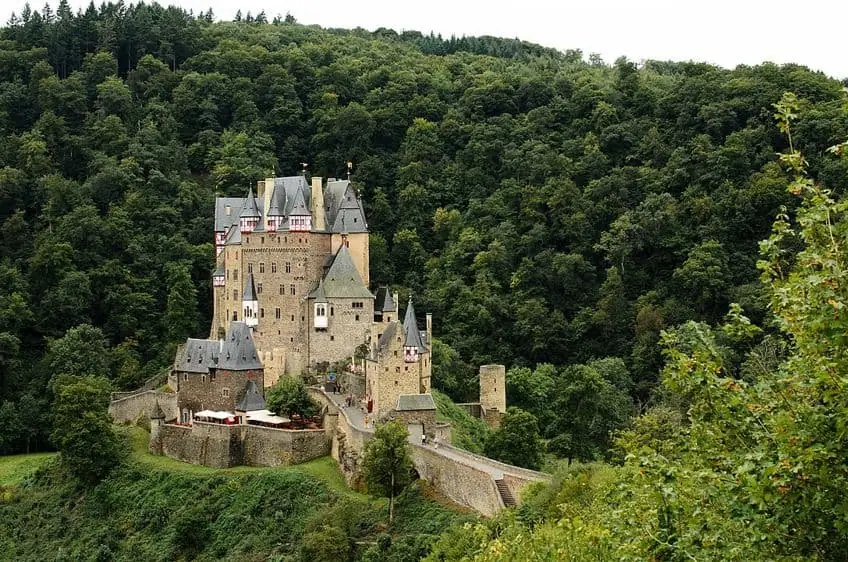
Ancient and Medieval Architecture in Germany
The Roman Empire was a society that spanned across much of Europe, and the same is true of Germany. Some of the earliest structures in the country were Roman in general design, and the many military fortifications and structures that were constructed by this ancient civilization in Germany would go on to have immense influence as time went on. The Romans inspired almost everything that came after them. Once the Western Roman Empire had fallen and the Pre-Romanesque era came into being, the beginnings of the Merovingian and then the Carolingian kingdoms led to the development of an architecture that was often directly inspired by the Romans. This would continue into the Romanesque period, but a more Germanic style would develop when the first Gothic structures started to be constructed.
These grand cathedrals and similarly magnificent buildings would go on to influence German architecture well into the future.
The Renaissance in Germany
The Renaissance may have had its start in Italy, but it soon spread throughout Europe, and Germany was no exception to this. Between the early-14th and the early-15th centuries, German Renaissance architecture started to grow and develop. This would come alongside the reintroduction of various Classical architectural elements into the design of German buildings. The Renaissance stood at the forefront of the resurgence of this Greek and Roman-inspired design ethos. Furthermore, the beginnings of the Protestant Reformation during this period contributed to the fragmented and often underdeveloped nature of large swaths of German land, but things would start to change with the emergence of Baroque styles.

Baroque and Rococo Styles in Germany
While Renaissance architecture was an attempt to return to Classical forms for the contemporary age while keeping the general symmetrical and proportional aspects of Classical architecture intact, this came to an end with the advent of Baroque architecture. The Protestant Reformation led to the development of structures that were far humbler in their general presentation, and Germany was at the forefront of the Reformation. Baroque architecture, and later Rococo, was a direct response to the lessening of architectural extravagance from those who had converted to Protestantism. The response of the Catholic church was strong and swift with regard to architectural design.
German Catholics started to move towards this far more extravagant style in terms of Counter-Reformation movements, and some immensely opulent structures followed in its wake.
The Impact of World War I and II on German Architecture
The World Wars and their influence cannot be understated. In the aftermath of the First World War, the beginnings of Modernism would start to take root. German architecture was at the forefront of this with figures like Walter Gropius and Ludwig Mies van der Rohe and institutions like the Bauhaus standing as titanic influences in the development of Modern architecture. However, the inherently internationalist principles of Modernism put these early Modern architects at odds with the rise of the Nazi Party in the country.

During the lead-up to the Second World War, the Nazis had managed to purge much of what was deemed to be against their nationalistic principles. So, Nazi architecture, ironically spearheaded by Albert Speer, was meant to have a decidedly German national character. This meant that architecture during this period was meant to reflect the values of German nationalism and the Nazi Party in general and would serve as an important propaganda tool of the regime.
Modern Architecture in Germany
Things started to change after the Second World War, and Modernism could finally come into full swing in the country. After the war, there was the need to rebuild the country, and West Germany moved towards the Modernist model in general, although there was also significant reconstruction of important landmarks that had been decimated in the many bombings by Allied forces. In the 21st century, there has been a move towards a resumption of reconstruction as well as the implementation of Postmodern styles like New Classical architecture.
These moves show that German architecture is still in development and will continue to develop to suit the changing of the country’s political and social landscape.
German Architecture Styles
Germany is a part of Europe, and as such, the architectural styles discussed below can be found throughout Europe and beyond. However, much like every nationality that takes on a style found throughout the continent, Germany adapted to these styles and made them their own. So, let’s have a look at a few German iterations on European architectural styles.
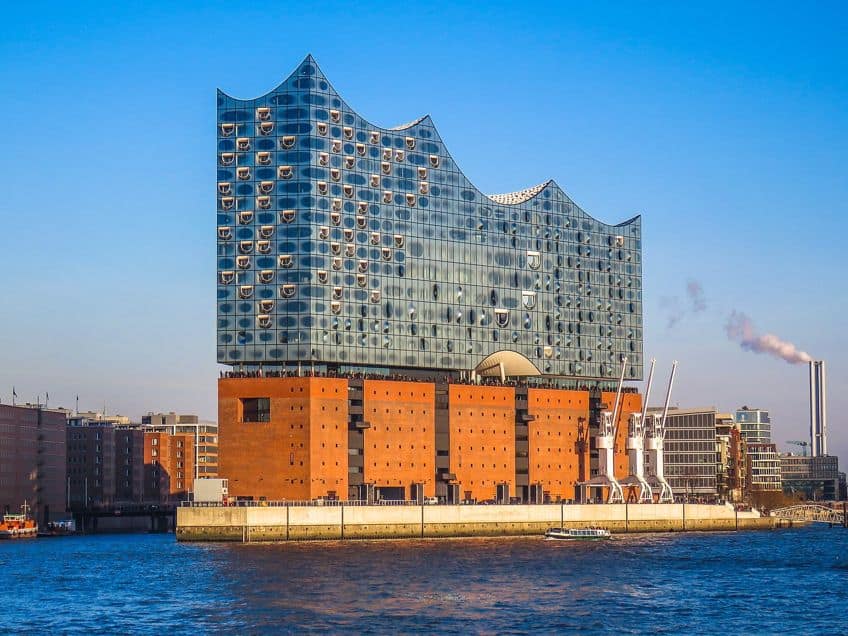
Gothic Architecture in Germany (12th – 16th Centuries)
Gothic architecture did take hold in Germany and is associated with pointed arches, ribbed vaults, flying buttresses, and the height of the structures that adopted this style. But other than this, the origins of the name suggest a Germanic beginning. This is not the case, because the Goths had nothing to do with Gothic architecture, and the name was instead applied in retrospect by Renaissance figures.
Gothic architecture actually originated in France, but the style would travel throughout Europe, and several important pieces of Gothic architecture can be found in Germany.
Renaissance Architecture in Germany (15th – 16th Centuries)
Renaissance architecture was first developed in Italy, specifically in Florence, but it quickly spread throughout Europe. The basic tenets of the style called for the incorporation of Classical elements that had been neglected in previous architectural styles. The rediscovery of various artistic and architectural developments from the Roman Empire spilled into a renewed desire to emulate those old styles.
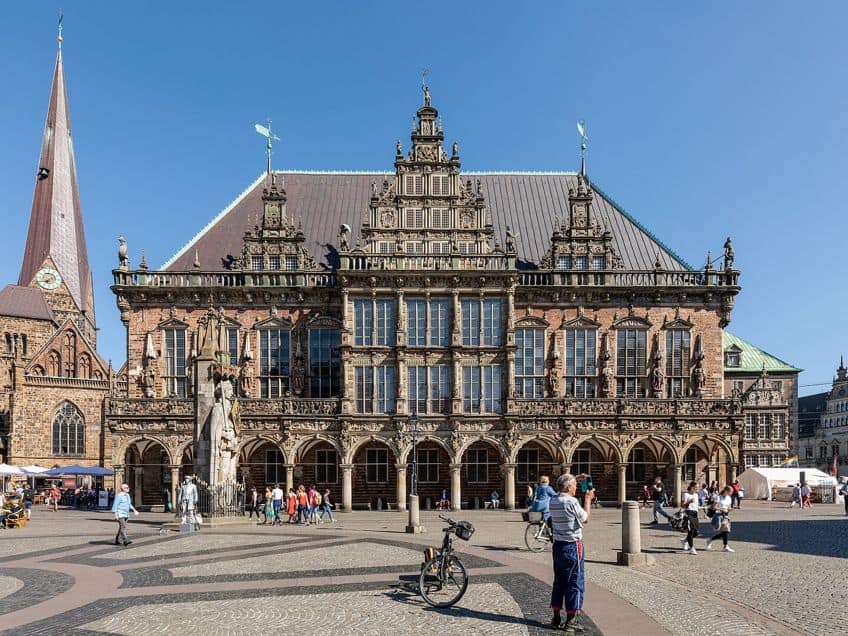
This is why Renaissance architecture is noted for its dedication to symmetrical and proportional designs that use Classical architectural elements like columns, arches, and domes. In terms of German architecture during this period, similar methods and styles were copied. The Roman Empire may have once been the enemy of the ancient German peoples, such as the Visigoths, but by this period of time, the Roman Empire had become one of the most important symbols of Western civilization, and a desire to attempt to emulate it swept throughout Europe.
Baroque Architecture in Germany (16th – 18th Centuries)
Like many styles that spread throughout Europe, Baroque architecture did not originate in Germany. Instead, it came from Rome and then made its way through the continent. The basic tenets of Baroque architecture were similar in Germany to their other European counterparts. Baroque architecture was a response to the more austerity-inspired architecture of Protestant structures, and it wanted to be grandiose in its general execution.
This is why Baroque architecture in Germany and beyond was dedicated to a lack of general symmetry while incorporating a comprehensive array of decorative elements and artistic designs, especially in the resplendently decorated interiors of Baroque churches and palaces.
Rococo Architecture in Germany (1730s – 1760s)
Rococo architecture was a continuation of Baroque architecture, but it moved towards something even more dramatic. The style has its origins in France, but it became prominently used in Germany and Austria. This style would become especially prominent in Southern Germany where it became common for churches to make use of this style. Rococo architecture is noted for its use of dramatic elements that took the basic premises of Baroque architecture and further elaborated on them to the point where no interior surface was left undecorated. Rococo architecture in Germany followed this design with intricate arrays of sculptures, paintings, stucco designs, and elaborate architectural elements.
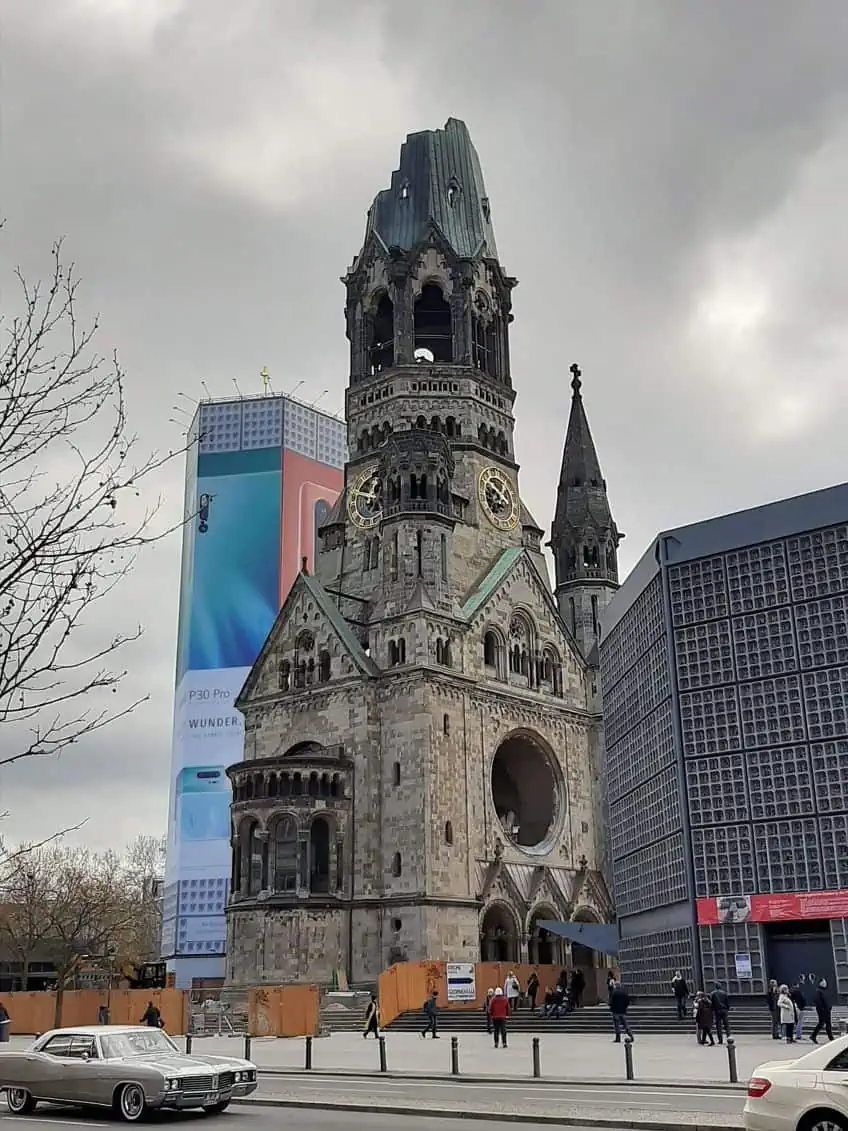
Modern Architecture in Germany (1920s – 1980s)
Modernism saw much of its origin in Germany within two major movements. There was the Bauhaus, which was an architectural and design school that was founded and developed by Walter Gropius. This school would encourage the use of functional structures that minimized the use of traditional decorative aesthetic elements in favor of open spaces and unadorned walls made with modern materials, like steel and concrete. On the other hand, there was also the work of Ludwig Mies van der Rohe, who was seen as the leader of Modernism in Germany (although he would later go on to be the final director of the Bauhaus), and his designs called for functionality, a less is more approach and a dedication to modern materials.
These two figures would eventually aid in the development of the International Style which would become the predominant architectural style used around the world until the latter half of the 20th century.
Famous German Architects
There have been many instances of famous German architecture that have been designed and developed by many famed German architects. Below, we will examine only five of the most famous architects from the Modern and Postmodern eras that came from Germany and had an influence on world architecture.
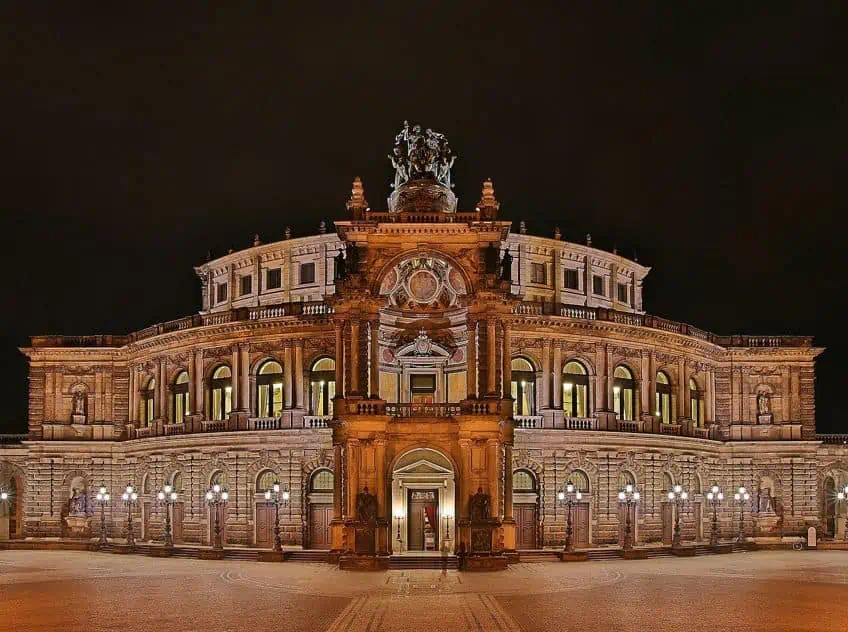
Walter Gropius (1883 – 1969) from Berlin
| Architectural Style | Bauhaus, Modernism, and the International Style |
| Years | 1883 – 1969 |
| Place of Birth | Berlin, Germany |
| Known For | The Bauhaus |
Walter Gropius was one of the most influential German architects to have ever lived. He is so widely remembered because he was the founder of the Bauhaus School. He innovated in more ways than architecture alone. He developed and designed furniture, artworks, interior design and decoration, and so much more. He believed in a new architecture for the Modern age that would be focused on industrial utility and function over aesthetic presentation.
He would then go on to become an important teacher of architecture in the United States and a leader in the International Style.

Ludwig Mies van der Rohe (1886 – 1969) from Aachen
| Architectural Style | Bauhaus, Modernism, and the International Style |
| Years | 1886 – 1969 |
| Place of Birth | Aachen, Germany |
| Known For | Barcelona Pavilion, Seagram Building, and the Farnsworth House |
Ludwig Mies van der Rohe is another of the famous Bauhaus architects. He was the final director of the school after Walter Gropius was forced to flee the country (something that van der Rohe would also have to do in time). He is best remembered for being a pioneering figure in the International Style and Modernism in general. He wanted to create a new kind of architecture for the modern day that would come to represent the modern world in the same way that Classic architecture had defined the antique world. He often did this through a dedication to his “less is more” maxim of functional architectural development.

Hans Scharoun (1893 – 1972) from Bremen
| Architectural Style | Organic and Expressionist architecture |
| Years | 1893 – 1972 |
| Place of Birth | Bremen, Germany |
| Known For | Berliner Philharmonie |
Hans Scharoun was an architect who was especially prominent in Organic architecture, a form that was especially espoused by the famed American architect Frank Lloyd Wright. In addition to this dedication to a more organic form of architecture, Scharoun was also a proponent of Expressionistic architecture, and he is perhaps best known for designing the Berliner Philharmonie. He also designed several German-style houses, schools, and other public structures.
This meant that his work ultimately fell within the Modern tradition, and he was an influential member of the movement as his structures adopted more natural and flowing forms.

Gottfried Böhm (1920 – 2021) from Offenbach am Main
| Architectural Style | Expressionist and Post-Bauhaus architecture |
| Years | 1920 – 2021 |
| Place of Birth | Offenbach am Main, Germany |
| Known For | Hans Otto Theater and the Cologne Central Mosque |
Gottfried Böhm was both an architect and a sculptor. His sculptural works were famous in their own right, but his architectural work will be the focus here. He worked in the aftermath of the Second World War and contributed to the reconstruction of the country in the aftermath of that devastating conflict, such as a Gothic-style chapel in Cologne that he redesigned after it was utterly destroyed in the war. He did not consider himself to necessarily fall within any distinct architectural styles and instead saw himself as establishing a connection between the past and the present with his designs. He would go on to become the very first German architect to be awarded one of the most prestigious awards in the architectural world, the Pritzker Prize.

Frei Otto (1925 – 2015) from Siegmar
| Architectural Style | Lightweight architecture |
| Years | 1925 – 2015 |
| Place of Birth | Siegmar, Germany |
| Known For | Olympic Stadium |
Frei Otto was an architect and structural engineer, and he used the latter qualification to design the kinds of intricate and lightweight structures that he developed. His designs made use of tensile and membrane designs that were developed through computational calculations. His work can be seen in locations such as the lightweight and membranous design of the Olympic Stadium in Munich.
He would go on to become an international lecturer and an innovative thinker in the realms of structural mathematics and civil engineering.
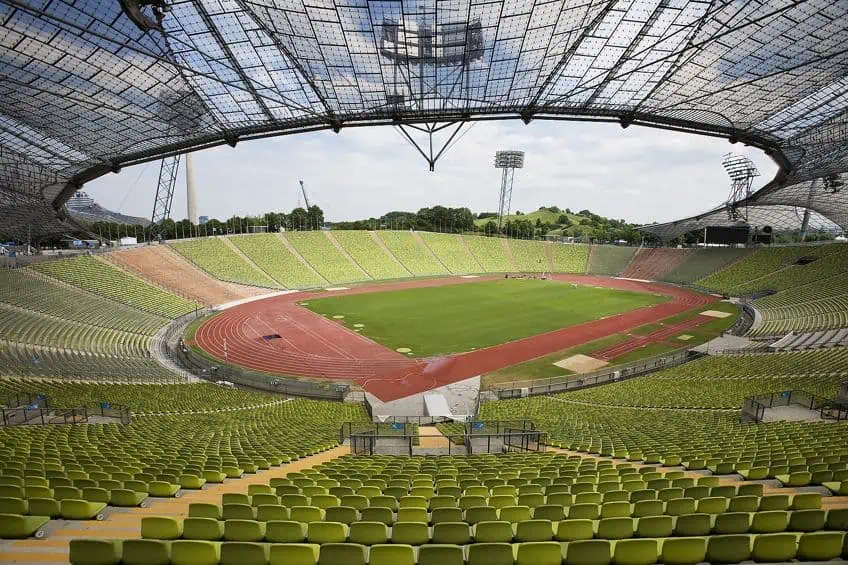
Iconic German Buildings
There are many iconic German buildings in this world, from German-style houses in a vernacular design to grand cathedrals. We will examine only five of these instances of famous German architecture, but these are some of the most influential instances of German architecture that have ever been designed and constructed. Let’s get started and have a look at these iconic German buildings.
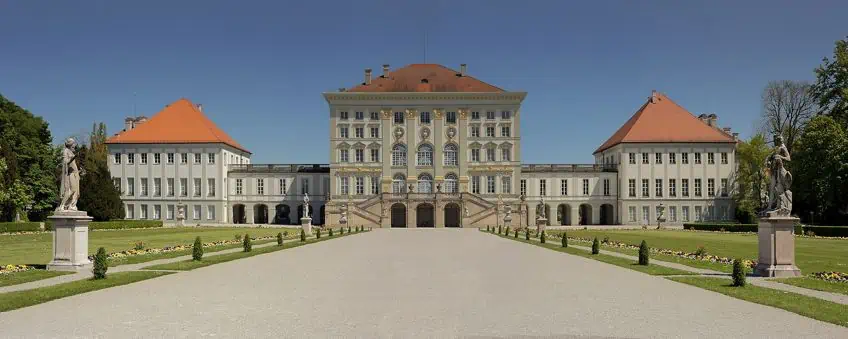
Cologne Cathedral (1248 – 1560 and 1842 – 1880) in Cologne
| Architect | Master Gerhard (1210 – 1271) |
| Date Constructed | 1248 – 1560 and 1842 – 1880 |
| Function | Church |
| Location | Cologne, Germany |
Cologne Cathedral is one of the most famous Gothic cathedrals in the world, and definitely one of the most famous in Germany. The history of this cathedral is a fascinating thing to behold as it includes massive spires that have become such integral landmarks in Cologne, but regardless of that current status, the building was not finished until much later.
It started construction in the 13th century, but the funds ran dry and there was no longer any means to work on the structure. Work only resumed in 1842, and the building was only completed, according to the original medieval Gothic design, in 1880.
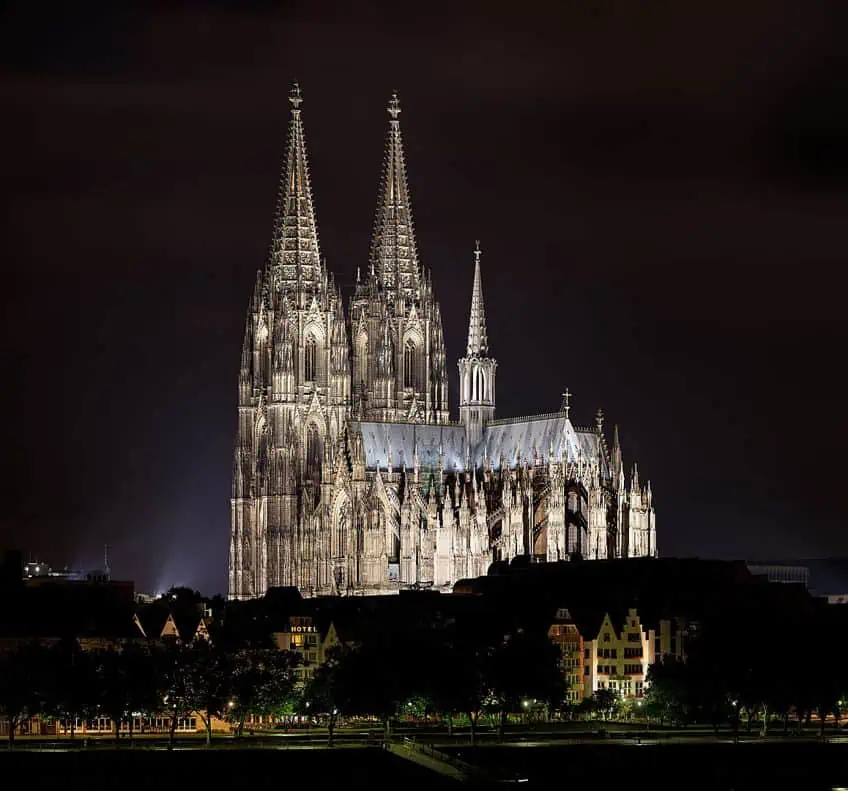
Brandenburg Gate (1788 – 1791) in Berlin
| Architect | Carl Gotthard Langhans (1732 – 1808) |
| Date Constructed | 1788 – 1791 |
| Function | City gate |
| Location | Berlin, Germany |
The Brandenburg Gate is a Neoclassical city gate structure located in Berlin. The magnificent gate structure has become one of the most recognizable landmarks in the country, and it was built to celebrate the victory of Frederick William II, the Prussian king, over a Dutch uprising. This city gate has served as a site for numerous historical events, such as Napoleon’s seizure of a statue from the gate after his conquest, Hitler passing a procession through it after the Nazi Party had come to power, Ronald Reagan giving his famous “tear down this wall” speech at the gate, and when the Berlin Wall fell, it was a gathering place to celebrate the reunification of Germany.
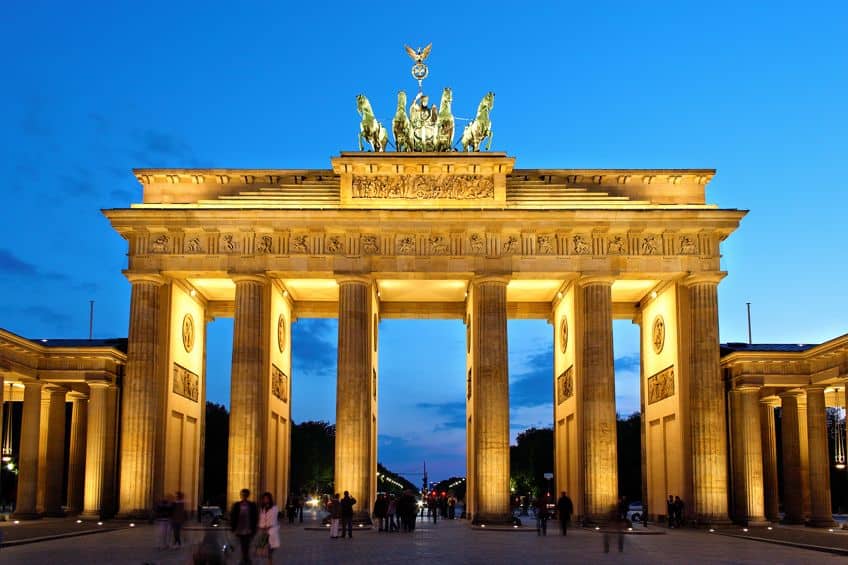
Neuschwanstein Castle (1869 – 1886) in Hohenschwangau
| Architect | Eduard Riedel (1813 – 1885) |
| Date Constructed | 1869 – 1886 |
| Function | Palace |
| Location | Hohenschwangau, Germany |
Neuschwanstein Castle is one of the most famous German buildings to have ever been constructed. It was built at the behest of King Ludwig II of Bavaria as a structure inspired by the many stories and German myths that he adored. The building was meant to be an idyllic fairytale retreat that paid homage to the work of Richard Wagner and was resplendently decorated in artworks. The building was never actually finished as Ludwig practically bankrupted himself with his lavish construction plans.
Neuschwanstein Castle has since become one of the most popular tourist destinations in the country.

Berlin Cathedral (1894 – 1905) in Berlin
| Architect | Julius Carl Raschdorff (1823 – 1914) and Otto Raschdorff (1854 – 1915) |
| Date Constructed | 1894 – 1905 |
| Function | Church |
| Location | Berlin, Germany |
The Berlin Cathedral is a monumental church in Berlin that has technically been in use for centuries. The building has been rebuilt multiple times, and the latest rebuilding occurred in the late-19th and early-20th centuries. The church is used as an actual church, but it has also been the location for numerous national and cultural events, like state ceremonies and even performances. The church sustained damage during the Second World War, and the interior was only fully restored by 2002. There have been calls for restorations to the exterior too.
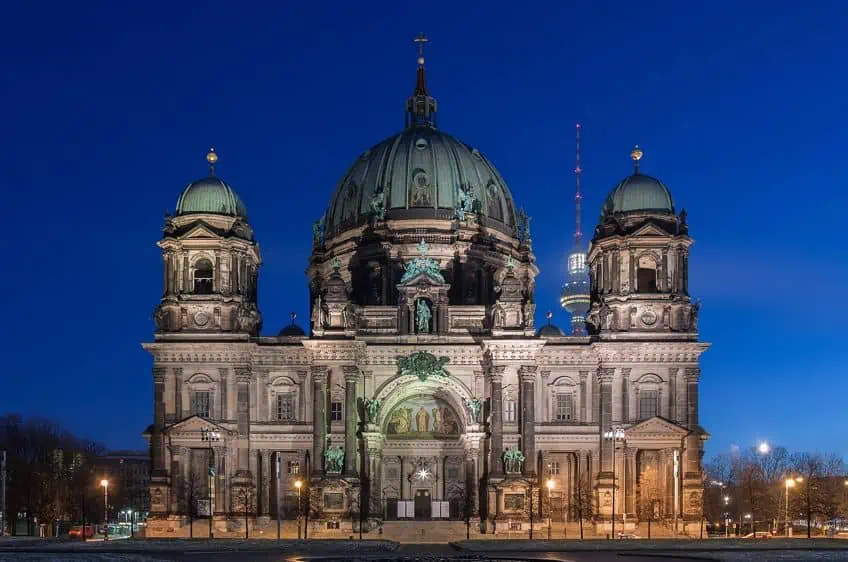
Bauhaus Dessau (1925 – 1926) in Dessau-Roßlau
| Architect | Walter Gropius (1883 – 1969) |
| Date Constructed | 1925 – 1926 |
| Function | Museum |
| Location | Dessau-Roßlau, Germany |
Bauhaus Dessau was the origin location of the Bauhaus School, and this architectural and design school was immensely influential in the development of Modernism and the International Style. Many of those who attended the school in some way went on to innovate and develop the Modern architecture that dominated the 20th century. The school building was designed by Walter Gropius, the founder of the Bauhaus, and he designed it around the same principles that he taught. It made use of a steel and concrete frame, a glass façade around large stretches of the building, and an interior that was focused on functionality over aesthetics.
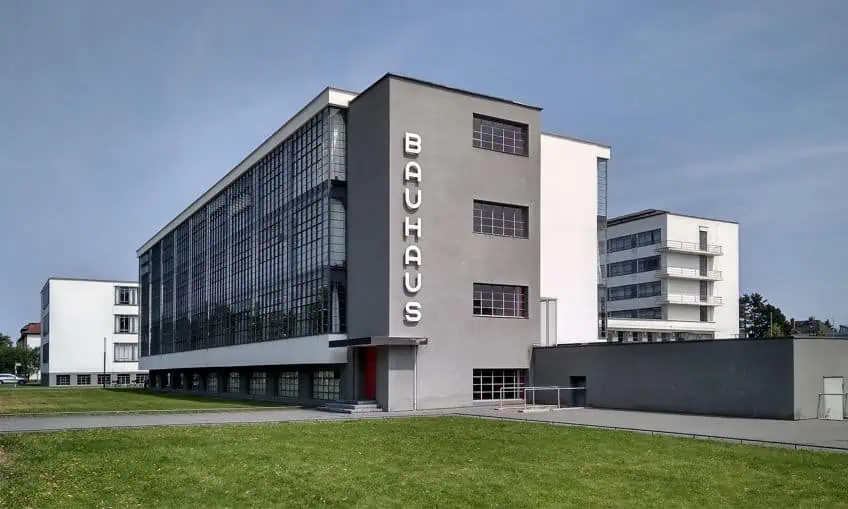
We have come to the end of our discussion about German architecture. We have examined the general history of German architecture, the many German architecture styles, some of the most famous German architects, and a few of the most iconic German buildings. Hopefully, you have learned a good deal about German architecture, and all that’s left for us to say is that we wish you a fantastic time ahead.
Frequently Asked Questions
What Is German Architecture?
German architecture is, quite simply, any architecture that originated in Germany or was designed by a German person. There have been many German people who have left the country over the years, and some of the most prominent Modernist architects from Germany have become integral to international forms of architecture. However, as those architects originated in Germany, there could be an argument that such styles are at least partially German.
What Are the Most Famous German Architecture Styles?
There is not necessarily a style that is distinctly German, as Germany forms part of Continental Europe, and so there tended to be a free flow of ideas across national borders throughout German history. Some of the most prominent forms of European architecture that have become prominent in Germany include Gothic, Renaissance, Baroque, Rococo, and Modern architectural styles. In addition to this, there are also vernacular German architectural styles that can be seen, for instance, in German-style houses and other buildings.
Who Are the Most Famous German Architects?
There have been many famous German architects over the centuries, but many of the most famous ones were architects who were either within the Modernist tradition or were responding to it. These architects include figures like Walter Gropius, Ludwig Mies van der Rohe, Hans Scharoun, Frei Otto, and Gottfried Böhm.
Justin van Huyssteen is a writer, academic, and educator from Cape Town, South Africa. He holds a master’s degree in Theory of Literature. His primary focus in this field is the analysis of artistic objects through a number of theoretical lenses. His predominant theoretical areas of interest include narratology and critical theory in general, with a particular focus on animal studies. Other than academia, he is a novelist, game reviewer, and freelance writer. Justin’s preferred architectural movements include the more modern and postmodern types of architecture, such as Bauhaus, Art Nouveau, Art Deco, Brutalist, and Futurist varieties like sustainable architecture. Justin is working for artfilemagazine as an author and content writer since 2022. He is responsible for all blog posts about architecture.
Learn more about Justin van Huyssteen and about us.
Cite this Article
Justin, van Huyssteen, “German Architecture – Explore Famous German Buildings.” artfilemagazine – Your Online Art Source. June 20, 2023. URL: https://artfilemagazine.com/german-architecture/
van Huyssteen, J. (2023, 20 June). German Architecture – Explore Famous German Buildings. artfilemagazine – Your Online Art Source. https://artfilemagazine.com/german-architecture/
van Huyssteen, Justin. “German Architecture – Explore Famous German Buildings.” artfilemagazine – Your Online Art Source, June 20, 2023. https://artfilemagazine.com/german-architecture/.


